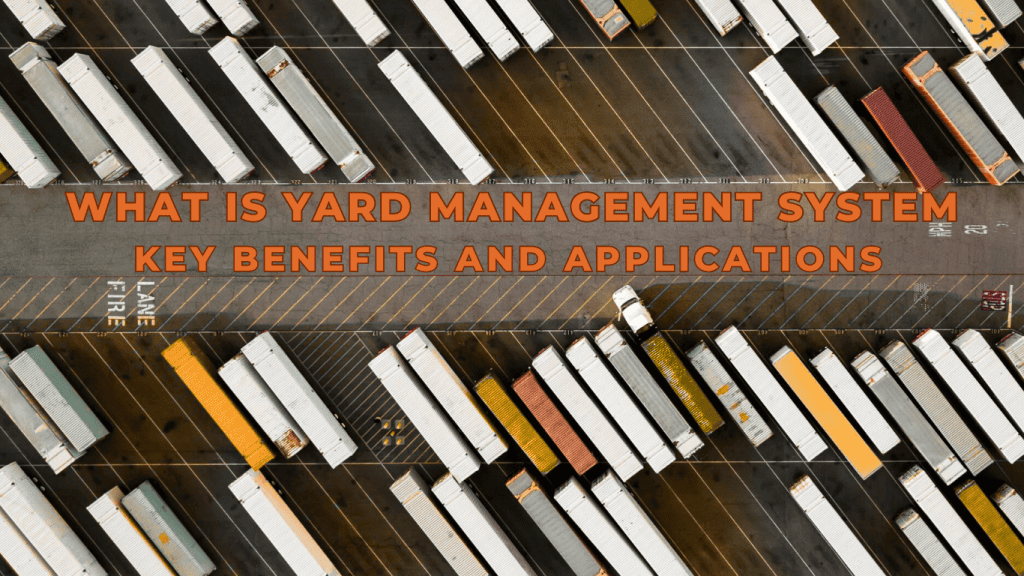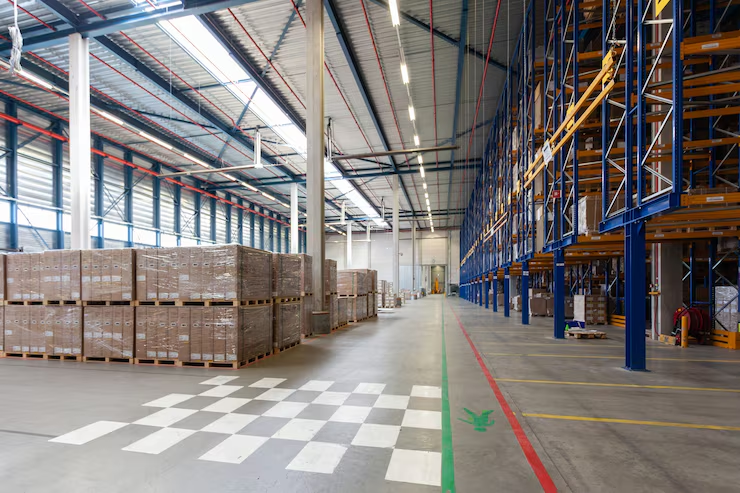Yard management system (YMS) is a term you might hear often if you’re involved in warehousing or logistics. But what exactly does it solve? For most warehouse operators, managing trailers, loading docks, inbound and outbound schedules, and space utilization can become chaotic quickly. A YMS is designed to bring order to this disruption.
In 2024, a U.S. distribution center implemented a real-time YMS using GPS and RFID. As a result, they reduced trailer dwell time from 3.2 hours to 1.7 hours. This not only saved operational costs but also improved turnaround time for drivers. That’s just one example of the many benefits of a YMS, especially when tailored to meet the specific needs of warehouses.
In this blog, we’ll break down how YMS works, its real-world applications, and how it’s quietly changing warehouse efficiency across industries.
What Is A Yard Management System?
A yard management system helps warehouse teams manage trailers, spotter trucks, and dock assignments across large yards. It fills the operational gap between the warehouse and transportation departments by tracking every vehicle and activity that happens outside the warehouse building. Unlike warehouse management systems that focus on inventory inside, a YMS is all about what’s happening in the yard, including when trucks arrive and how long they stay.
Benefits Of Yard Management System For Warehouses
Warehouses that rely on manual tracking often face delays, miscommunication, and unnecessary yard congestion. A YMS for warehouses addresses these issues by giving teams real-time visibility into trailer locations, gate entries, and dock availability. Instead of relying on radio calls or clipboards, managers can track trailer status and yard activity through a single digital dashboard.
This improves coordination across departments and reduces dependency on guesswork. YMS tools also help prioritize urgent loads, automatically assign available docks, and keep a log of every movement in the yard. Another benefit is better labor utilization.
Yard staff can receive clear, automated instructions on which trailers to move next, saving time and cutting back on unnecessary movements. Over time, this leads to a more structured yard flow, fewer delays, and smoother operations, especially during peak shipping hours.
How YMS Solves Daily Challenges In The Yard
Every yard faces common issues: delayed trucks, unclear trailer locations, and gate bottlenecks. A YMS solves these through structured workflows and real-time insights.
The system tracks trailer status, whether it’s waiting, unloading, or idle. This lets managers avoid forgotten trailers or unassigned dock time. It also improves communication between gate staff and operations by offering shared dashboards. For yards handling live loads or drop trailers, YMS also reduces confusion by automatically assigning trailers to the correct loading bays. This removes the back-and-forth between dock workers and supervisors.
Supporting Sustainability Through Smarter Yard Management
One overlooked benefit of a yard management system is its role in reducing the environmental impact of warehouse operations. When trailers sit idle for long periods or trucks circle the yard looking for a dock, unnecessary fuel is burned. This not only increases operational costs but also contributes to carbon emissions.
By improving scheduling, gate control, and trailer visibility, a YMS helps reduce idle time and keeps vehicles moving efficiently. Drivers spend less time waiting with engines running, and yard trucks complete fewer unnecessary moves.
Some advanced YMS platforms also track fuel usage and idle time, allowing managers to identify trends and adjust policies to meet internal sustainability targets. Over time, this results in measurable reductions in fuel consumption, greenhouse gas emissions, and reduced wear and tear on equipment.
What To Look For In A Yard Management System
When selecting a YMS, ensure it fits your yard size and operational requirements. Smaller warehouses may only need basic tracking, while larger ones benefit from AI-based scheduling and alert systems. Important features to consider include:
- Real-time location tracking using GPS or RFID
- Integration with your WMS or TMS platforms
- Mobile access for yard truck drivers and managers
- Dwell time reporting for performance tracking
- Custom alerts for overstayed trailers or schedule issues
Yard Management Checklist
Before launching a yard system, ensure the following basics are covered:
- Yard layout is mapped and entered into the system
- Each trailer and gate has a unique ID or tag
- Staff are trained on how to log movements and updates
- Docks are scheduled based on load type and truck size
- Entry/exit points have a digital log or sensor
- A backup plan exists for manual override in emergencies
Before rolling out a yard management system, it’s essential to cover the basics, such as mapping your yard layout, tagging trailers and gates, and training your team. These steps ensure a smooth implementation and minimize errors from the outset. Planning for exceptions, such as manual overrides, also helps you stay prepared during system downtimes or emergencies.
Wrapping Up
A modern yard management system can completely transform the way your warehouse operates. From improving communication and speeding up trailer handling to offering real-time visibility, YMS tools help eliminate preventable delays and reduce manual errors.
If your team is still using paper logs or radios to manage yard activity, now is the time to make the switch. Zelo Express can help you take the first step by recommending the right solution based on your operations. Whether you’re managing a single site or multiple facilities, our team understands the challenges and offers practical, scalable support.
FAQs
1. How does a yard management system work?
A yard management system tracks trailers, yard trucks, and dock activity in real time using software, sensors, and tags—helping warehouse teams coordinate movements and reduce delays.
2. What’s the difference between TMS, WMS, and YMS?
TMS handles transport scheduling, WMS manages inventory inside the warehouse, while YMS focuses on trailer movements, gate control, and dock activity outside the warehouse.
3. How does a YMS improve safety in the yard?
A YMS reduces risks by scheduling vehicle movements, preventing dock conflicts, and providing real-time visibility to managers, which helps avoid congestion and unsafe overlap in busy yards.




